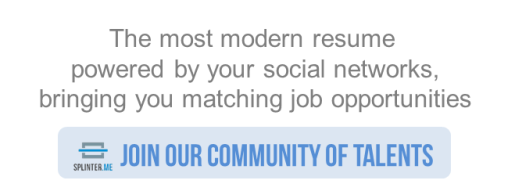There is a huge time and effort spent by both professionals digging through the 3 to 6 million monthly job openings worldwide on online platforms (1) and recruiters digging through hundreds or even thousands of applications for each job opening they have.
Although diversity of options is always appreciated, lack of filtering which talent matches to which work opportunity and fits the requirements is burdening and not really “child’s play”.

Nothing stops professionals from applying to any job in the world, even when they do not meet the job requirements. And nothing helps them to sort the job descriptions into where they have the right skills and experience and where they don’t.
Here is the current situation:
- 64% job seekers apply for a positions knowing they don’t meet the requirements, mainly because most (57%) feel there is skill gap and that there are 50% chances they get hired even if they don’t have experience in their particular industry/field, but they will be trained – and almost all of them want to learn new skills (2)
- This situation matches the perspective of recruiters: most of them receive applications that do not fit the requirements of skills and experience – as shown below (3)

-
But although there are 79% recruiters likely to hire a candidate who lacks experience/ skills but it is willing to learn when it comes to entry level positions, there are only 9% of them when it comes to managerial/ executive positions – as shown in the charts below (3)

splinter.me offers solutions to this situation:
> A matchmaking system that benefits both professionals and recruiters. Professionals do not need to manually search and match job descriptions with their profile. We do it for them: they receive a list of work opportunities where they fit the requirements. Recruiters do not need to sort themselves the received applications. They just receive a list of matching talent profiles once they insert the job description in our system.
> A career advisor for professionals. Due to the big data analysis and machine learning we are using, our system will be able to tell people that share similar interests or career paths what skills they have in common with others and what skills they might want to develop (and how, through our hubs). Or even tell what potential career paths they have in front of them, starting from the skills and experience they already have.
Bear with us while in beta and discover all this useful functionality in the upcoming months.
Sources:
- Forbes article about the job postings market
- CareerBuilder Talent Crunch Report 2012 on 1500+ recruiters and 2000+ job seekers in the United States
- Job Preparedness Indicator survey was conducted online in the US by Harris Interactive on behalf of the Career Advisory Board in September 2011 on 700+ job seekers and 500+ recruiters (not a statistically representative sample)

